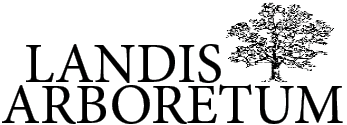Technology is also enabling smarter machines. As advanced sensors can tell us when our cars need maintenance, that same technology is becoming available for power equipment including chainsaws, weed whackers, and mowers. When these items are linked to mobile phones, arborists can easily track runtimes on equipment, measure fuel consumption, and schedule maintenance. There is even a phone app to locate your chainsaw should you forget where you put it! Robotic mowers are available with sensors and automatic deck adjustments, allowing them to mow a lawn precisely. Some of these machines even load themselves on and off the trailer at the worksite.
Urbanization and changing environmental conditions are creating new challenges for our trees. In response, computer technologies are being developed that monitor plant health. Chlorophyll fluorometers (which measure the amount of chlorophyll emitted from plant leaves) give an insight into the plant’s health, since levels of variable fluorescence often indicate the level of plant stress. The European Space Agency’s FLuoresence EXplorer, FLEX, was designed to measure fluorescence of plants from space in order to provide an understanding of the way carbon moves between plants and the atmosphere and how photosynthesis affects the carbon and water cycles.
Sensor-enabled real-time data collection in concert with computer technology can rapidly analyze information. Data collected over time is helping to build a model of plant health for individual tree species under different environmental conditions. This technology can also monitor different physiological functions: sap flow rates, for example. Sap flow is the measure of a tree’s water flow, which indicates its health and vitality. By monitoring it, stress and other issues can be detected long before they can be seen. When charted, the sap flow creates a pulse rate, similar to the pulse rate of a human. Who knows, there may be Fitbit for trees in the near future!
Controlling damage caused by insect pests and fungal pathogens is imperative when managing our landscapes and forests. Applications using sensors installed on trees have proved invaluable in detecting these attacks. Beneficial in large forest stands or in urban areas, these sensors link to GPS coordinates on monitor maps. Arborists can then see which trees are in distress and give aid to the specific plants.
Technology changes at an increasingly rapid pace, and some innovations widely in use today seemed inconceivable just a few years ago. In arboriculture as in nature itself, adaptation means survival.
